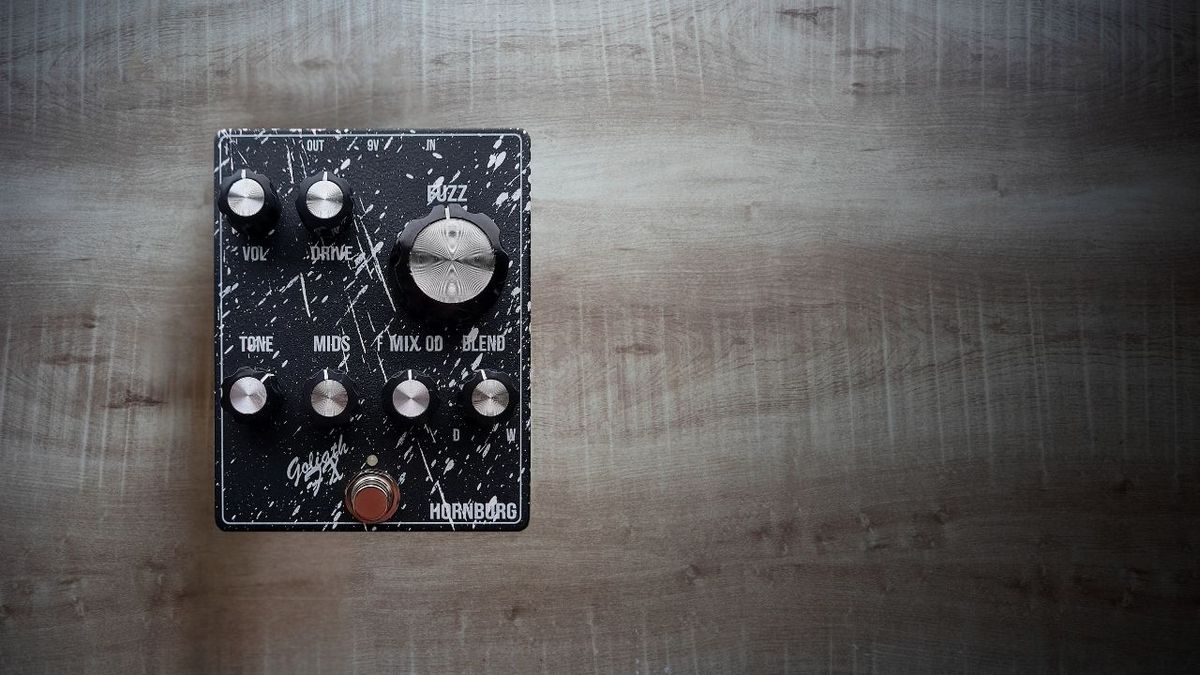Bassists seem to have a particular affinity with fuzz, but in the world of beefed-up bass sounds it is rare to come across a new idea. To list all the Big Muff clones alone would be a long and tedious process, but add to this all the circuits based on the Tube Screamer, the Fuzz Face or the Tone Bender and the task becomes almost infinite. We tend, as the old adage goes, to know what we like and like what we know.
Thankfully, some boutique manufacturers are keen to show us what we’re missing and Goliath FX are just such a company. At first glance, the Hornburg seems to possess the usual controls that we see on most distortion stompboxes, but to understand the quirks of this pedal we need to first look at how the signal is processed. The input signal is split three ways – overdrive, fuzz and clean blend.
Most bassists that use distortion will know that having the ability to add your clean tone is a distinct advantage and leaves the thickness of your sound intact, but being able to blend two other effects into the circuit at the same time is something that really sets the Hornburg apart. “The concept of stacking circuits is as old as the hills,” says Matt Clark from Goliath FX. “But I can't think of many circuits that actually blend three parallel signals together.
Maybe the AlphaOmega by Darkglass Electronics? That’s the closest I can think of. It’s not easy – it took three revisions before we got it right!” The Hornburg excels at the signature Big Muff snarl.


















